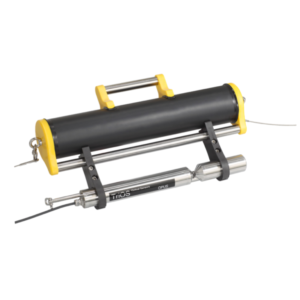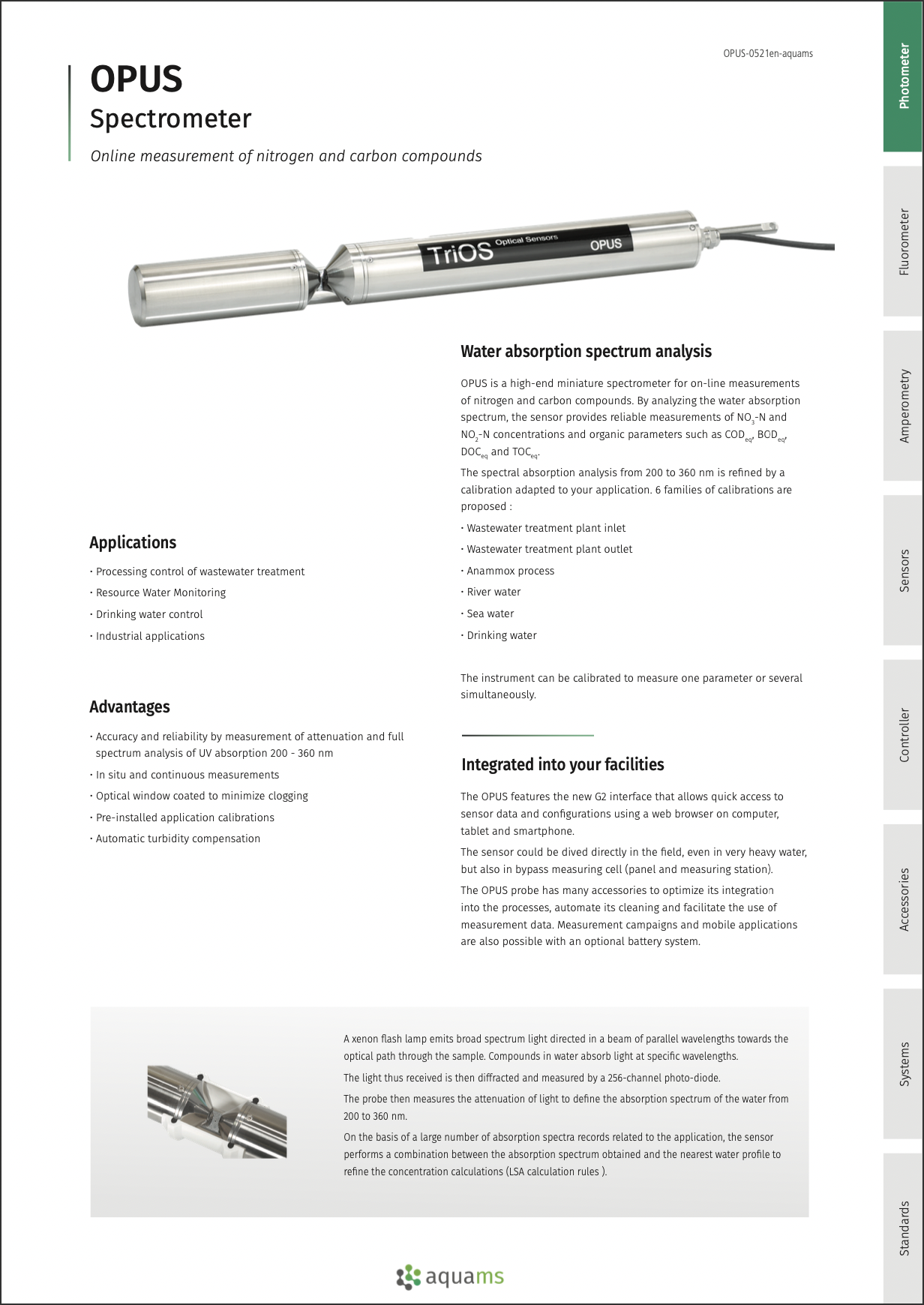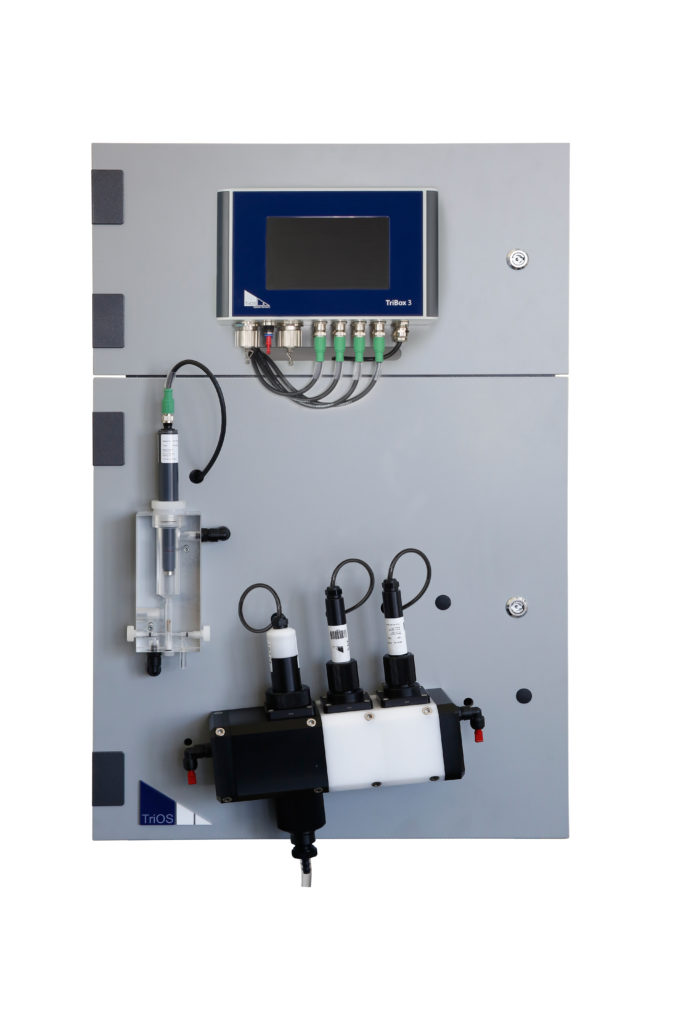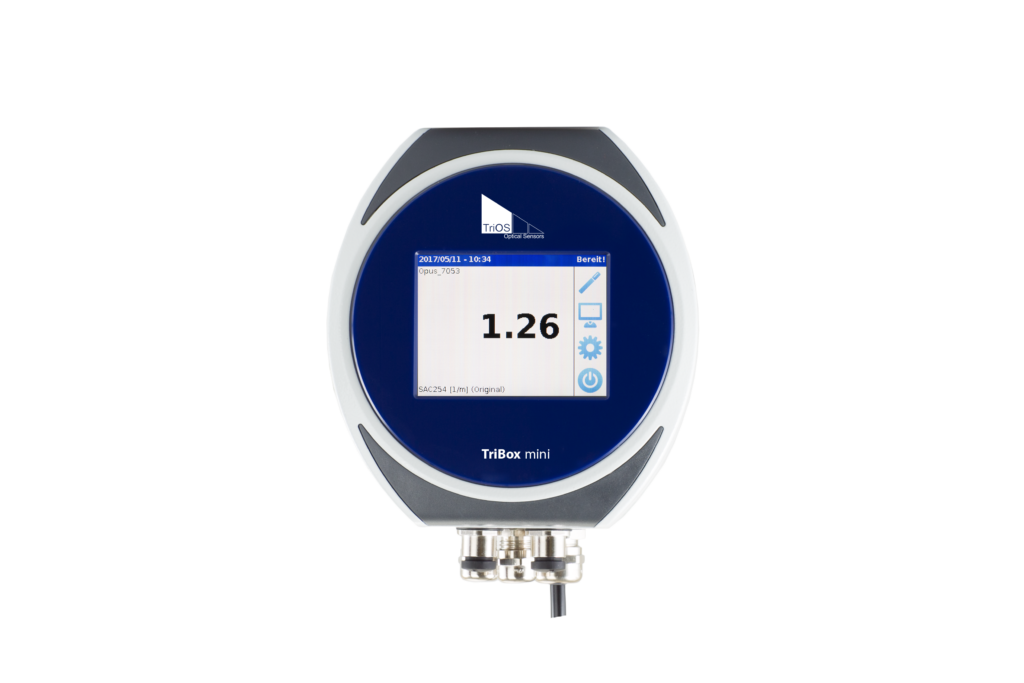Spectral sensor OPUS
Nitrates, nitrites and organics compounds measurement with submerged spectrometer

OPUS is a high quality submerged spectrometer for online measurements of nitrogen and carbon compounds.
By the analysis of a complete spectrum, OPUS is able to provide reliable measurements of the concentrations of N03-N and N02-N as well as the organic parameters such as CODeq (chemical oxygen demand), BODeq (biological oxygen demand), DOCeq (dissolved organic carbon) and TOCeq (total organic carbon). The instrument can be calibrated for the measurement of one parameter, or several simultaneously.
Spectral absorption analysis of OPUS is refined by a calibration adapted to your application. 6 types of calibrations are proposed :
- Wastewater treatment plant inlet
- Wastewater treatment plant outlet
- Anammox process
- River water
- Sea water
- Drinking water
The probe can be installed directly in the field, even with highly contamined water, or in measuring cell (panel and measuring station).

The sensor has many accessories to optimize its integration into the processes, automate its cleaning and facilitate the use of mea- surement data. Measurement campaigns and mobile apps are also available with the optional battery.
OPUS has the new G2 interface that allows quick access to sensor data and configurations using a web browser on computer, tablet and smartphone. The OPUS can also be easily integrated into existing control processes and data logger.
Measurement principle
Light attenuation measurement and absorption spectrum analysis :
The xenon flash lamp emits a broad spectrum light, controlled by a reference diode and directed into a beam of parallel wavelengths toward the optical path to pass through the sample. Compounds in water absorb light at specific wavelengths.
The light received is then diffracted and measured by a 256 channel photodiode. The probe measures the attenuation of light to define the absorption spectrum of the medium from 200 to 360 nm.
On the basis of a large number of absorption spectra records related to the application, the sensor performs a combination between the absorption spectrum obtained and the nearest water profile to refine the concentration calculations (LSA calculation rules ).
Applications
- Wastewater treatment plants
- Resource Water Monitoring
- Control of drinking water
Advantages
- Accuracy and reliability by measurement of attenuation and full spectrum analysis of UV absorption 200 - 360 nm
- In situ and continuous measurements
- Optical windows with nano treatment against deposits
- Pre-installed application calibrations
- Automatic turbidity comensation
| Principle of measurement | Attenuation, spectral analysis |
|---|---|
| Detector | High quality miniature spectrometer 256 chanels 200 to 360 nm 0,8 nm/pixel |
| Parameters | NO3-N, NO2-N, Nitrates, Nitrites, COD eq, BOD eq, TOC eq, DOC eq, TSS eq, KHP, SAC254, COD-SAC eq, BOD-SAC eq |
| Measurement ranges | see list in datasheet |
| Measurement accuracy | see list in datasheet |
| Turbidity compensation | Automatic |
| Internal memory | 2 GB |
| T100 response time | 2 min |
| Measurement interval | > 1 min |
| Probe Body Materials | Stainless steel (1.4571 / 1.4404) or titanium (3.7035) |
| Dimensions (L x d) | 470 mm x 45 mm (with optical path 10 mm) |
| Weight | ~ 3 kg stainless steel ~ 2 kg titanium |
| Interface | Ethernet (TCP/IP) RS-232 or RS-485 (Modbus RTU) |
| Power Supply and consumption | 12 ... 24 VCC (+/- 10%), ≦ 8 W |
| Maintenance | <0.5 h / month (standard use) |
| Calibration interval | 24 months |
| Maximum pres- sure | - with SubConn connector : 30 bars - with fixed cable : 3 bars - in flowcell : 1 bar |
| Temperature of the medium / sample | + 2 ... + 40 °C |
| Ambient temperature | + 2 ... + 40 °C |
| Storage temperature | - 20 ... + 80 °C |
| Inflow velocity | 0,1 ... 10 m/s |
Document(s)

Spectral OPUS probe datasheet
Online and in situ sensor for nitrogens and carbons measurements
Plug-and-play installation




